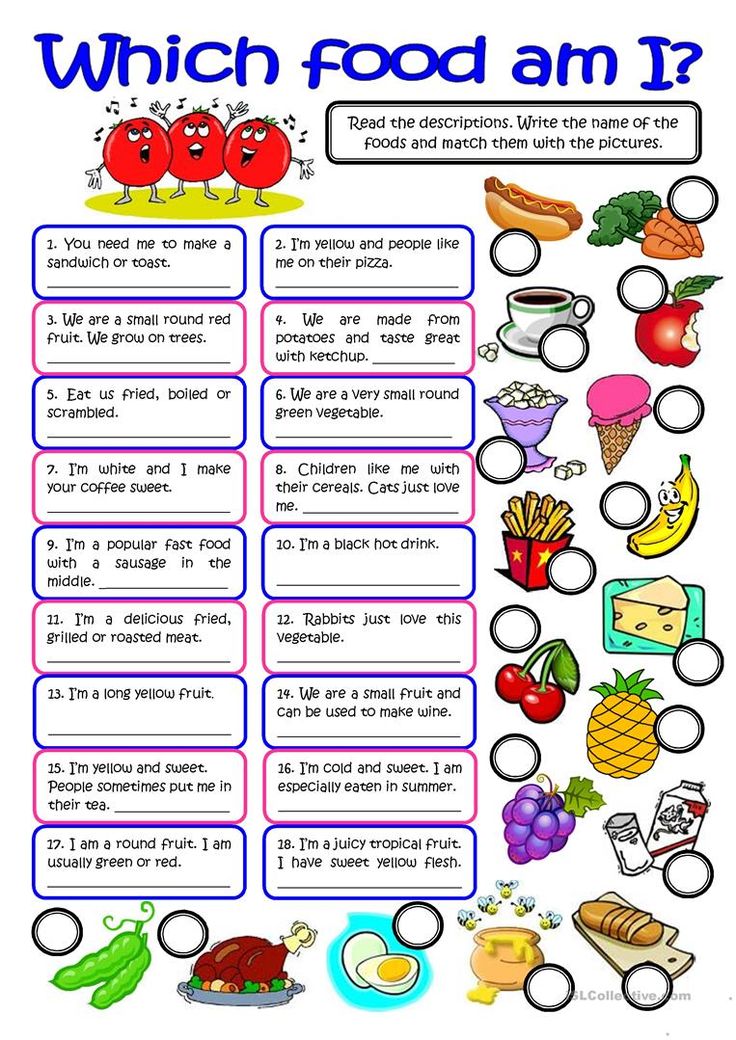Food rich in calcium and vitamin d for babies
The Ultimate List of Calcium Rich Foods for Kids
Calcium rich foods for kids help ensure proper bone growth and development, plus a whole lot more.
We’ve all heard the slogans about calcium’s role in the body from child nutrition campaigns and dairy advertisements.
As a pediatric nutritionist, I know parents understand how important calcium is to kids’ health.
Maybe you’re a little skeptical about the push to get kids to drink milk.
Do kids have to drink milk to get calcium?
Does calcium actually keep the bones strong?
Do kids really need that much calcium and wouldn’t they get enough from a balanced diet with lots of veggies rich in calcium?
Let me say this loud and clear: I believe calcium-rich foods are required in a child’s diet.
Those little bones are growing and bone-building nutrients are essential to this process.
In this article, you’ll learn why kids need calcium, the foods rich in calcium for kids, how much calcium is in milk, and how you can ensure your child gets enough.
The body stores calcium in the bones because too much calcium in the bloodstream isn’t a good thing for the heart.
When your child gets calcium from food, it’s deposited into the bones making them grow and get stronger.
So how much calcium do children need?
The Dietary Reference Intake (DRI) for calcium in children according to the National Institutes of Health (NIH) is as follows:
Why Foods High in Calcium for Kids MatterKids aged 4-8 years need 1,000 mg per day
Kids and teens aged 9-18 years need 1,300 milligrams per day
Lack of dietary calcium is one of the leading nutrient deficiencies in children.
Statistical data indicates boy aged 9-13 and girls from 9 to 18 years are at the highest risk for calcium inadequacies.
Even when we look at intake from both food and supplements, teen girls in particular, still fall short.
Foods containing calcium often carry other important nutrients like vitamin D, vitamin A, and protein, for instance.
When you choose calcium-based foods for your family, you’re also helping everyone get closer to a nutrient-rich diet.
Dairy foods such as milk and yogurt are excellent sources of calcium but there’s a variety of other calcium-containing foods.
A teen vegetarian may get all of his calcium from non-animal sources, or a child with a milk allergy may get calcium from calcium-fortified non-dairy foods.
Other families may prefer not to consume real milk, for whatever reason, and get their calcium from a variety of foods, like seeds or vegetables.
Do kids really need calcium foods like milk?
It depends.
Look at your child’s medical circumstances, your family’s cultural practices, your child’s eating habits and food preferences (read: what he will eat), and other realities like your food budget when making nutrition decisions in your home.
They all play out differently for every family.
Milk may be part of a healthy diet, but dairy milk isn’t for everyone.
However, calcium is for every growing child. And that means calcium-containing foods.
Which Foods Have Calcium?Milk is just one food that helps kids meet their calcium requirement.
Not only does 1 cup of milk have 310 mg of calcium, your child is also getting many other important bone nutrients, such as protein, vitamin D, and potassium.
In a study of children 2-18 years old, milk was the primary source of calcium, potassium, vitamin D in their diet.
But milk isn’t the only way to meet your child’s calcium needs.
The following calcium-rich foods list shows the variety of foods high in calcium to help your child or teen meet his daily requirements.
The foods you choose to offer and how you combine them so your child gets his total daily calcium requirement is up to you.
How Much Calcium is in Milk?There’s about 300 milligrams of calcium in a cup of dairy milk.
You’ll get around the same amount of calcium from a cup of yogurt, too.
How Much Calcium is in Spinach?Cooked spinach contains about 200 milligrams of calcium in a cup; in a cup of raw spinach, there’s about 50 milligrams.
High Calcium Foods Chart
| Food | Serving Size | Calcium Content |
| 1% Milk | 1 cup | 314 mg |
| 2% milk | 1 cup | 314 mg |
| Whole milk (3.25%) | 1 cup | 276 mg |
| Soy milk, all flavors, unsweetened | 1 cup | 301 mg |
| Chocolate soy milk | 1 cup | 306 mg |
| Almond milk, vanilla | 1 cup | 451 mg |
| Rice drink, fortified w/ calcium | 1 cup | 283 mg |
| Yogurt, plain, low fat | 1 cup | 311 mg |
| Mozzarella cheese, shredded | ½ cup
1 ounce | 306 mg
163 mg |
| Cheddar cheese, low fat, diced | ½ cup | 225 mg |
| American cheese, processed | 1 slice | 314 mg |
| Cottage cheese (2%) | ½ cup | 125 mg |
| Tofu (prepared with calcium sulfate) | ½ cup | 861 mg |
| Sardines, canned in oil | ½ cup | 285 mg |
| Soybeans | 1 cup | 515 mg |
| Almonds, roasted | ¼ cup | 115 mg |
| Sesame seeds | 1 ounce | 280 mg |
| Collard greens, cooked | 1 cup | 357 mg |
| Eggnog | 1 cup | 350 mg |
| Amaranth (grain), uncooked | 1 cup | 307 mg |
| Cream of Wheat, cooked | 1 cup | 306 mg |
| V8 juice, calcium enriched | 1 cup | 299 mg |
| Mung beans, raw | 1 cup | 273 mg |
| Spinach, canned | 1 cup | 272 mg |
| Ricotta, whole milk | ½ cup | 257 mg |
| Turnip greens, cooked | 1 cup | 249 mg |
| Spinach, cooked | 1 cup | 201 mg |
| Figs, dried | 1 cup | 241 mg |
| Bagel, enriched w/ calcium (plain, poppy seed, onion, sesame) | 1 bagel | 217 mg |
| Brazil nuts | 1 cup | 213 mg |
| Bread, white wheat | 1 slice | 192 mg |
| Tempeh | 1 cup | 184 mg |
| Chia seeds, dry | 1 ounce | 179 mg |
| Mustard greens, cooked | 1 cup | 165 mg |
| Beet greens, cooked | 1 cup | 164 mg |
| Kale, raw | 1 cup | 53 mg |
| **Values obtained from the USDA Nutrient Database |
It’s no surprise that people ask about other foods, especially veggies rich in calcium such as broccoli and spinach.
There’s no doubt there are some veggies rich in calcium.
Take a look at the following vegetables with the highest amounts of calcium per cup, according to the USDA Nutrient Database.
- A cup of oriental radishes (730 mg)
- A cup of soybeans (500 mg)
- A cup of cooked collards (357 mg)
- A cup of turnip greens (250 mg)
Did you notice broccoli and spinach didn’t even make the list?
Let’s look at these vegetables for a comparison.
- The calcium in 1 cup of raw, chopped broccoli is 43 mg.
- The calcium in 1 cup of raw spinach is 53 mg.
- The calcium in 1/4 cup of almonds is 115 mg.
Tip: Spinach needs to be cooked to be a notable source of calcium.
[Want to learn more about nutrition from vegetables? Read: 5 Types of Vegetables for Kids]
Can Your Child Meet His Calcium Needs From Vegetables?First, let’s review calcium requirements again.
Young children need 1,000 mg/day.
Kids and teens require 1,300 mg/day.
It takes 23 cups of broccoli to equal 1,000 mg calcium!
That’s a lot of broccoli!
I’ve yet to meet a child who eats that much broccoli every day, and they’d probably get a tummy ache if they did.
You can combine a variety of vegetables and other calcium food sources to match the total daily calcium requirements, but this takes forethought and planning.
There’s another factor to consider before relying on vegetables to meet your child’s calcium needs: calcium’s bioavailability.
Bioavailability is the actual amount of calcium the body absorbs and uses from foods.
Vegetables contain substances like oxalates and phytates, which interfere with calcium absorption and reduce the overall amount absorbed.
That means your child will get less calcium from those vegetables than the amount of calcium they contain.
The sources of calcium are up to you.
Milk may not be for everyone but calcium is for every growing child.
Where is your child getting his calcium from?
Need More Help with Calcium Rich Foods?If you want more help with planning a variety of calcium foods and ensure your child is growing strong, healthy bones, I’ve got a resource for you!
I’ve written a detailed guidebook that digs deeper into calcium and how to meet your child’s needs.
I take into account the eating habits of children and make practical suggestions on how to balance the overall diet to encourage plenty of calcium.
If you have a child who isn’t meeting his needs, I’ll help you with advice about calcium supplements.
Learn more about The Calcium Handbook and other handbooks for parents and tune in to my expert interview with Dr. Taylor Wallace on bone growth in children, on The Nourished Child® podcast and my article Whole Milk Nutrition Facts for Kids.
This post was updated from its original in June 2021.
Calcium Foods for Babies and Toddlers – Happiest Baby
Believe it or not, preventing brittle bones in old age begins right now! Your little one’s body is already working hard to build, form, and strengthen bones they’ll need for the rest of their lives.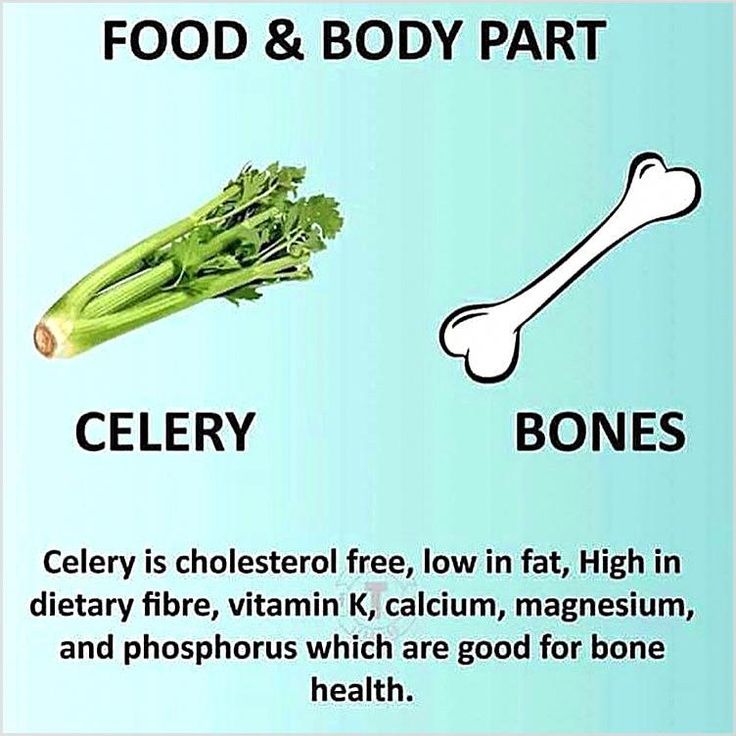 In fact, kids develop 90% of their bone mass by their 18th birthdays, making childhood a crucial time to load up on bone-bolstering nutrients like calcium.
In fact, kids develop 90% of their bone mass by their 18th birthdays, making childhood a crucial time to load up on bone-bolstering nutrients like calcium.
Calcium is the most abundant mineral in the body and offers a framework for your tot’s growth. A whopping 98% of the body’s calcium is banked inside the bones—and not just for kiddos, but for parents too!
But as essential as calcium is, the American Academy of Pediatrics (AAP) says supplementing isn’t necessary for healthy kids. Instead, experts recommend making sure that tots get enough calcium through the foods they eat. So, what are the best calcium-rich foods for babies and toddlers? Read on to discover 12 tasty bone-building foods to help little ones get enough calcium and keep their tiny skeletons in tip-top shape.
(Just keep in mind that the serving sizes described below may not reflect the servings your baby or toddler eats—they’re just for reference. Here’s help with baby portion sizes. )
)
How much calcium do children need?
Wondering how much calcium your little one’s diet could use? Here are the daily calcium needs for babies and toddlers:
- Babies 0 to 6 months: 200 milligrams
- Babies 7 to 12 months: 260 milligrams
- Toddlers 1 to 3 years: 700 milligrams
Milk
Let’s start with the obvious: Cow’s milk offers a ton of calcium per serving! Unless your child has a dairy allergy, cow’s milk is an udder-ly vital nutrition source for tots ages 1 and up (babies under 12 months should not have cow’s milk). Whole cow’s milk boasts high calories and fat, priming your little one’s brains and bodies for their rapidly developing bodies and brains. Just one cup of cow’s milk contains 276 milligrams of calcium, 39% of what toddlers need daily.
Yogurt
A fantastic food for babies from 6 months and up, yogurt is full of protein, B vitamins, phosphorus, and live cultures (aka probiotics). All too often, babies and toddlers have difficulty going #2, so probiotics may help keep your tot’s digestive system happy.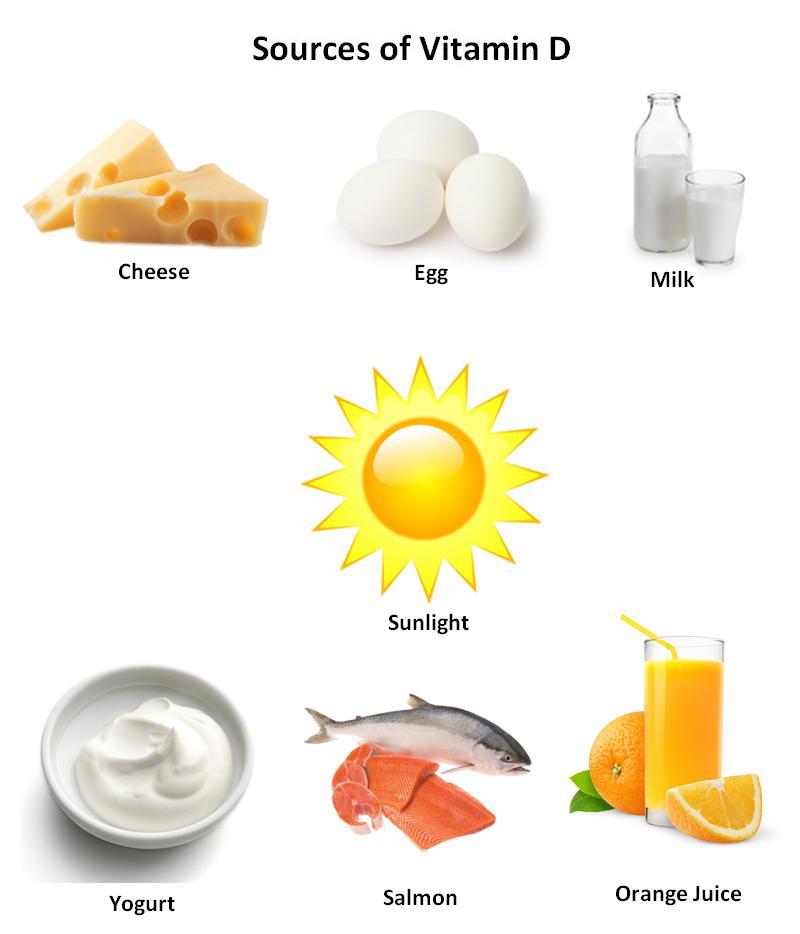 Plus, if your babe struggles with skin issues, like eczema, probiotics may be able to help with relief. Serving up 140 milligrams of calcium per half cup, plain full-fat yogurt offers babies 54% to 70% of their daily needs and about 20% of a toddler’s. To naturally sweeten and add more calcium, blend yogurt with dates.
Plus, if your babe struggles with skin issues, like eczema, probiotics may be able to help with relief. Serving up 140 milligrams of calcium per half cup, plain full-fat yogurt offers babies 54% to 70% of their daily needs and about 20% of a toddler’s. To naturally sweeten and add more calcium, blend yogurt with dates.
Mozzarella Cheese
Cheese, please! In addition to being rich in protein and supplying calories essential to your baby’s growth, mozz is also brimming with calcium. A half cup of shredded mozzarella gives your baby 73% to 95% of their calcium goal and 27% for toddlers. Finely shredded mozzarella works well for young babies to pick up with their whole hand and munch. Older babies and toddlers may enjoy fresh mozzarella cheese that’s been cut into thin sticks they can easily hold. Buying pasteurized cheeses lessens the risk of foodborne illness and keeps your little one as safe as possible.
Bok Choy
Moving onto some plant-based calcium eats, bok choy is a Chinese cabbage with flat, smooth green leaves. It has a ton of potassium, folate, and antioxidants, like beta-carotene, which loads kiddos up with eye-healthy vitamin A. A half cup of shredded, cooked bok choy has 79 milligrams of calcium—30% to 40% of a baby’s daily needs, and 11% of a toddler’s. Shredded, cooked bok choy is ideal for toddlers, but babies fare better with bok choy puree. Consider pureeing bok choy with salmon or on its own with a squeeze of lemon, and let your baby enjoy its natural buttery taste.
It has a ton of potassium, folate, and antioxidants, like beta-carotene, which loads kiddos up with eye-healthy vitamin A. A half cup of shredded, cooked bok choy has 79 milligrams of calcium—30% to 40% of a baby’s daily needs, and 11% of a toddler’s. Shredded, cooked bok choy is ideal for toddlers, but babies fare better with bok choy puree. Consider pureeing bok choy with salmon or on its own with a squeeze of lemon, and let your baby enjoy its natural buttery taste.
Tofu
Bursting with nutrients, tofu is teeming with calcium, especially if it’s fortified. A half cup of fortified tofu has 138 milligrams of the bone-friendly stuff, bringing your baby 53% to 69% of their recommended daily intake (or 20% for toddlers). Protein, zinc, iron, copper, and selenium are also present in ample amounts. Plus, tofu’s naturally soft texture makes it a safe and simple choice. Tofu fruit blends work nicely for babies, while soft pan-fried tofu cubes and sticks are appropriate for toddlers.
Sardines
Good for your little one’s heart, brain, and vision, sardines are like the unsung nutritional heroes of the sea. They pack protein, omega-3 fats, and calcium. An ounce (or about two tablespoons) of sardines carries 108 milligrams of calcium—42% to 54% and 15% of what infants and toddlers need, respectively. Boost your baby’s brain development and add strength to their bones and teeth with this tiny oily fish food. Fork-mash the sardines for easy eating!
Fortified Plant Milk
Pea milk and soy milk are some of the best plant-based milk options for toddlers with allergies to dairy milk. Plant milks made from soy and pea protein do an excellent job supplying calcium and vitamin D. One cup of pea milk has 451 milligrams of calcium, giving your toddler 64% of their calcium for the day, and one cup of soy milk provides 237 milligrams (or 34% of a tot’s daily needs). Soy milk offers some magnesium and phosphorous (like cow’s milk does) to support those ever-growing bones further.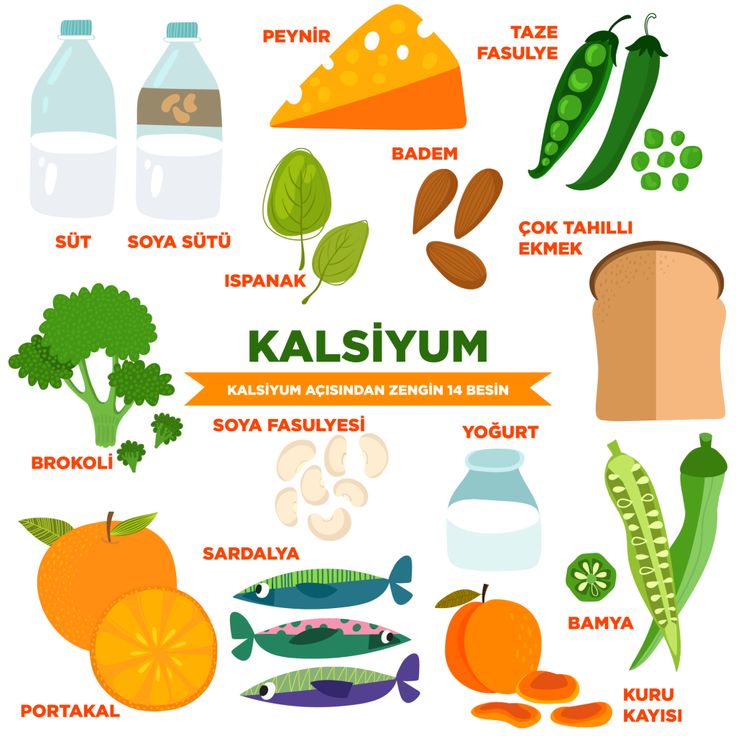
Just keep in mind that plant-based milks aren’t nutritionally adequate for babies, but iron-fortified formula and breastmilk are. If you have a toddler with a dairy allergy, please consult your medical provider or registered dietitian to choose the best plant-based milk for your tot.
Fortified Orange Juice
According to the AAP, babies don’t need juice, so sipping OJ is best left for toddlers starting from age 1. When your little one is ready for juice, be sure to get the kind that’s fortified with calcium. For toddlers, limit juice intake to about a half cup per day and focus on whole fruits as their primary fruit source. A half cup of fortified orange juice offers 175 milligrams of calcium, meeting a quarter of your toddlers' daily calcium needs. Many brands fortify their OJ with calcium and vitamin D, which work together to ensure your tot can absorb all the calcium they can.
White Beans
Beans are a must-have food for any child’s diet because they’re overflowing with nutrients everyone needs! Babies and toddlers get fiber, protein, potassium, magnesium, and amino acids, which help their muscles, nerves, hair, and skin. Cannellini and great northern beans are white beans that offer around 78 milligrams of calicium per half cup. That’s enough to cover 30% to 39% of your baby’s calcium intake for a day and 11% of your toddler's calcium needs.
Cannellini and great northern beans are white beans that offer around 78 milligrams of calicium per half cup. That’s enough to cover 30% to 39% of your baby’s calcium intake for a day and 11% of your toddler's calcium needs.
Amaranth
Amaranth is an ancient grain that resembles quinoa—in looks and nutritional value. It’s loaded with complex carbs, phosphorus, and potassium, plus it offers 58 milligrams of calcium in a half cup. Your baby gets 22% to 29% of their daily calcium from this serving of amaranth, while your toddler gets 8%. Prep amaranth to serve as a breakfast porridge and blend with chopped blueberries or peaches for toddlers or puree for your baby.
Almonds
Known for contributing heart-healthy fats and protein, almonds are a bone-booster, to boot. Because nuts put babies and toddlers at risk for choking, you might consider offering them ground or in a nut butter spread. A quarter cup of ground almonds contains 64 milligrams of calcium, while one tablespoon of almond butter contains 55 milligrams of calcium. Ground almonds mix well into soft foods, like yogurt and purees, while almond butter is best to offer thinly spread onto a cracker or toast.
Ground almonds mix well into soft foods, like yogurt and purees, while almond butter is best to offer thinly spread onto a cracker or toast.
Spinach
Babies and toddlers alike can reap the bone benefits of cooked spinach since a half cup offers a whopping 123 milligrams of calcium. That amount of spinach gives 47% to 62% to babies and 18% to toddlers. Not to mention, Popeye’s go-to green is wealthy in other bone-building essentials like magnesium and phosphorus, plus it’s jam-packed with potassium and folate. What’s not to love?
More Healthy Foods for Babies and Toddlers:
- Brain-Boosting Eats
- Iron-Rich Picks
- Amazing Grains
- Healthy Fats
- Easy Dinner Ideas
***
REFERENCES
- Urge Families to Boost Consumption of Calcium, Vitamin-D Rich Foods, AAP News, Oct 2014
- Optimizing Bone Health in Children and Adolescents, Pediatrics, Oct 2014
- National Research Council (US) Committee on Diet and Health, Diet and Health: Implications for Reducing Chronic Health Disease Risk, 1989
- National Institutes of Health Office of Dietary Supplements: Calcium
- U.
 S. Department of Agriculture FoodData Central: Milk
S. Department of Agriculture FoodData Central: Milk - Probiotics for treating eczema, Cochrane Database of Systematic Reviews, Nov 2018
- U.S. Department of Agriculture FoodData Central: Yogurt
- U.S. Department of Agriculture FoodData Central: Shredded Low-Moisture Part-Skim Mozzarella Cheese
- U.S. Department of Agriculture FoodData Central: Cabbage, Chinese (Pak-Choi)
- U.S. Department of Agriculture FoodData Central: Sardine
- U.S. Department of Agriculture FoodData Central: Unsweetened Nutritious Pea Milk
- U.S. Department of Agriculture FoodData Central: Soy Milk
- Fruit Juice in Infants, Children, and Adolescents: Current Recommendations, Pediatrics, Jun 2017
- U.S. Department of Agriculture FoodData Central: Calcium & Vitamin D No Pulp Pure Squeezed Orange Juice
- U.
 S. Department of Agriculture FoodData Central: Amaranth Grain
S. Department of Agriculture FoodData Central: Amaranth Grain - U.S. Department of Agriculture FoodData Central: Nuts, Almonds
- U.S. Department of Agriculture FoodData Central: Nuts, Almond Butter
About Gabrielle McPherson
Gabrielle McPherson, MS, RDN, LDN is registered dietitian in Missouri who specializes in community and pediatric nutrition. Gaby is passionate about encouraging families to eat well in simple, practical ways that are realistic...and delicious! When not working, Gaby loves cooking, baking, and making messes and memories with her sous-chef/preschooler Charlotte.
View more posts tagged, feeding
Have questions about a Happiest Baby product? Our consultants would be happy to help! Connect with us at [email protected].
Disclaimer: The information on our site is NOT medical advice for any specific person or condition. It is only meant as general information. If you have any medical questions and concerns about your child or yourself, please contact your health provider.
It is only meant as general information. If you have any medical questions and concerns about your child or yourself, please contact your health provider.
Food source of calcium for children, which foods are high in calcium
In the children's body, calcium affects the regulation of the muscles and the entire nervous system. In addition, thanks to calcium, the child's bones are strengthened, the immune system improves and the risk of allergies is reduced. During the growth period of the body, this is a critical element. Unfortunately, our body is not capable of producing this mineral on its own, so its only source is a well-balanced diet.
Calcium requirement for children?
First, let's deal with the calcium content in the blood, as this is the starting point. With normal growth of the child, the content of total calcium in the blood is:
-
For newborns from 1.75 to 3 mmol / l .;
-
In a child over the age of one year, from 2.
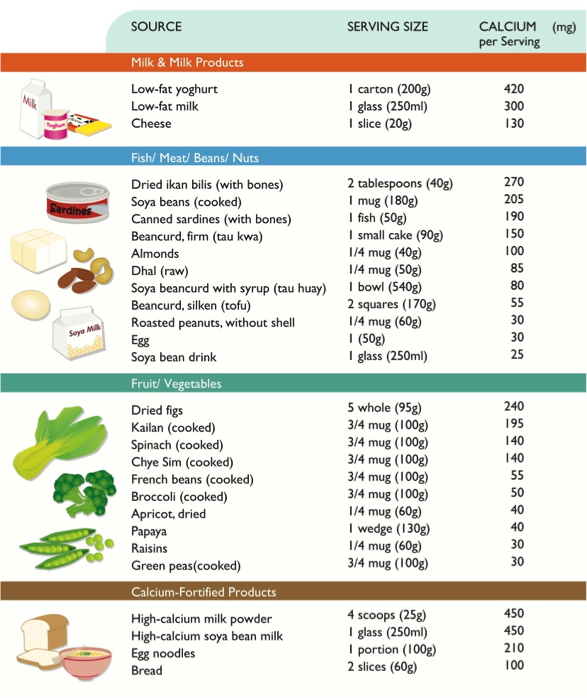 25 to 2.45 mmol / l .;
25 to 2.45 mmol / l .; -
In a teenager from 2.15-2.25 mmol / l.
If the child was born prematurely, then this norm is below 1.25 mmol / l.
It is also important to know what value the concentration of ionized calcium has. It affects the regulation of processes within cells. The norm for children is 1.1-1.37 mmol / l, and for adolescents 0.98-1.13 mmol / l.
How to determine the amount of calcium in a child?
For this, an appropriate blood test is taken from a vein. It is important that this is done on an empty stomach (you can only drink clean water). Additionally, it is recommended to eat only light and satisfying foods in the coming days, to exclude stress and physical activity.
What is the daily requirement of calcium for children?
According to recent studies, it is believed that a child should receive the following amount of calcium per day:
-
Age from 1 to 2 years - 500 mg;
-
Age from 4 to 8 years - 800 mg;
-
Age from 9 to 18 years - 1300 mg;
Important: calcium is better absorbed if vitamins D and K, phosphorus, magnesium are supplied to the body from foods and there is a balanced diet that contains essential trace elements.
Calcium deficiency symptoms:
-
Slow growth and weight gain, poor physical development.
-
The fragility of the nails and the presence of white stripes on them.
-
Problems with teeth.
-
Slow hair growth and hair loss.
-
General irritability and aggressiveness.
-
Constant fatigue and drowsiness.
-
Periodic cramps and numbness of the legs.
Which foods contain calcium
According to the recommendations of nutritionists and nutritionists, the main replenishment of calcium should be obtained from milk, cheeses and yogurt. If a child has lactose intolerance, then these products can be replaced with seafood, some vegetables, seeds and a number of dried fruits.
Almost all natural animal and vegetable products contain some amount of calcium. But to eliminate the deficiency of the mineral, we offer you a wide list of the richest sources:
- Milk and products based on it.
 It is the main source of calcium for preschool children. These include milk (including powdered milk), curd cheeses, natural yogurt, kefir and fermented baked milk. For better absorption of calcium, it is better not to add sugar.
It is the main source of calcium for preschool children. These include milk (including powdered milk), curd cheeses, natural yogurt, kefir and fermented baked milk. For better absorption of calcium, it is better not to add sugar. - Milk is one of the best options as calcium absorption is enhanced by the high concentration of vitamin D.
- Hard cheeses. Only 30 g of parmesan contains a third of the daily calcium requirement. Cheeses help replenish the required amount of protein and reduce the risk of childhood diabetes.
- White and green beans. The product is useful for the child's body due to the high content of magnesium, fiber and iron. 200 g of beans replenish about 30% of the daily calcium intake.
- Almonds, hazelnuts and other nuts. Any nuts contain a large amount of calcium and other useful elements. However, they should be included in the diet with caution due to the high calorie content and possible childhood allergic reactions.
- Pumpkin and sesame seeds.
 Seeds can be eaten both in pure form and as an addition to salads and pastries. An additional benefit from the seeds is that they are great for helping the intestines.
Seeds can be eaten both in pure form and as an addition to salads and pastries. An additional benefit from the seeds is that they are great for helping the intestines. - Cabbage of any kind. It is advisable not to allow excessive heat treatment. Children who have allergy problems can be given broccoli. 200 grams of cabbage provide about 25% of the daily value of calcium.
- Sardines and canned salmon. Canned food contains easily chewed fish bones. Thanks to this, from one canned food you can get half the daily norm of the element. However, you should not feed your child with canned fish every day, as this is far from the healthiest food.
- Flakes. Baby cereals (corn and wheat) can provide 50 to 100% of the required calcium. Since the body will not be able to absorb such an amount of the mineral at a time, it is better to make several servings with an interval of 4 hours.
- Orange juice. It is important that the juice is natural and low in sugar.
 One glass of fortified orange juice covers about 50% of the need for an element.
One glass of fortified orange juice covers about 50% of the need for an element.
KidZ Liquid Calcium
Building a healthy diet is no easy task. Especially if the child has allergies or is just picky about food. To replenish the amount of calcium, they often resort to vitamin complexes or pure calcium tablets. But the effectiveness of such sources is not always the best, since the body absorbs only part of the minerals and it needs vitamins for absorption.
Kidz Liquid Calcium is an innovative form of calcium that aids in children's formation and growth of bones, teeth and muscles. The liquid form allows the body to absorb vitamins for bone growth faster and better, and the additional content of the vitamin complex enhances the overall effectiveness.
Thanks to the same form of release (syrup and sticks), parents can clearly control the amount of calcium received by the child, without difficulties in compiling an appropriate diet. The instructions contain all the basic norms that allow the parent to easily select the required dosage.
Foods rich in calcium for children from 1 year old,
“Grows by leaps and bounds” — this well-known Russian proverb reflects the intensity of the growth and development of babies. Indeed, on average, the increase in the length of a baby in the first year of life is 20–25 cm, and there will never be such impressive results in the future. For the harmonious development and normal operation of all the organs and systems of the baby, a constant supply of nutrients is required - the "bricks" that make up the body.
Content: Hide
- Calcium - our support
- scarce states
- Sources of calcium
- Clain feeding
- dairy products
In addition to the main nutrients - proteins, fats and carbohydrates, revenue and micro -nits, it is necessary minerals. Despite the low content of these substances in the body, their role in maintaining life is enormous. They are part of numerous enzymes, hormones and other biologically active substances that regulate metabolic processes and implement an individual growth and development program. One of the most important minerals absolutely necessary for the human body is calcium. This element takes part in more than three hundred different processes in the body, but it plays its main role in the formation of the bone skeleton, helping the child grow strong, healthy and strong.
One of the most important minerals absolutely necessary for the human body is calcium. This element takes part in more than three hundred different processes in the body, but it plays its main role in the formation of the bone skeleton, helping the child grow strong, healthy and strong.
Calcium is our backbone
The inclusion of the mineral in the bones of a child begins in utero, mainly in the last trimester of pregnancy. In a newborn, the total amount of calcium in the body is approximately 25 grams. Childhood and adolescence is characterized by intensive growth and buildup of skeletal mass, and by the age of an adult, the content increases to 1000-1200 grams. Of the total amount of calcium, 99% is found in the bones and teeth, and 1% is in the blood and soft tissues. Calcium accumulates in parallel with phosphorus in the skeleton, forming a solid foundation for all bones. In this process, these elements work in pairs, and they are also assisted by vitamin D, which regulates the sufficient absorption of calcium from the intestines and its deposition in the bones. The most intensive processes of bone growth are observed in three age groups: from birth to one year, then at 5–7 years, and finally, in adolescence. During these critical periods, the child needs calcium in sufficient quantities, and the task of parents is to ensure the supply of this important mineral.
The most intensive processes of bone growth are observed in three age groups: from birth to one year, then at 5–7 years, and finally, in adolescence. During these critical periods, the child needs calcium in sufficient quantities, and the task of parents is to ensure the supply of this important mineral.
Permanent update
Many people think that the human skeleton is a "stone" frame, which gradually increases its mass as it grows older and undergoes virtually no changes. This is not entirely correct. The skeleton, like any other organ, is in constant renewal. Resorption and removal of old, damaged areas of bones and the formation of new young structures occur. In childhood, this process is very intense, and the skeletal system is completely renewed in 1–2 years. The indicator of the daily amount of calcium intake directly affects the rate of linear growth and bone mineral density, determining the physical development of the child and even the long-term risks of bone fractures in old age.
Many-sided macronutrient
Of course, the supporting structural role of calcium is very important, but this is not the only benefit of the mineral. The processes and exchange reactions in which he takes part are surprisingly diverse. Calcium is one of the important components of the blood coagulation system, determining the activity of at least seven links of this multi-stage cascade. This mineral is also necessary for muscle contraction, which directly affects muscle strength, heart function, the processes of narrowing and relaxation of the walls of blood vessels, and the regulation of blood pressure.
IMPORTANT! Calcium is also important for the effective functioning of the central nervous system, participating in the processes of excitation and transmission of a nerve impulse. By determining the activity of a number of enzymes and hormones, it is essential for the functioning of the immune and endocrine systems. At the same time, calcium probably performs the most basic task at the level of each cell of the body: it regulates the processes of growth and differentiation, participates in the formation of intercellular bridges and connections, forming tissues and organs.
This is why the concentration of calcium in the blood, due to its importance for a large number of vital processes, is precisely regulated, and the normal range is quite narrow from 2.16 to 2.51 mmol/l. Strict maintenance of this level is extremely important. What fluctuations are allowed? Very minor - a decrease in concentration by 20% already leads to major disorders: weakening of muscle tone, increased excitability of the nervous system, and even to the development of seizures.
Deficiency states
In case of insufficient intake of calcium from food or low absorption from the intestine (for example, in case of vitamin D deficiency), the body responds with a reaction: its excretion with urine decreases and absorption of the mineral from the intestine increases to the maximum. However, if these mechanisms are not enough to maintain the required level, the element is washed out of the bone structures. This leads to growth retardation, impaired bone and tooth formation.
IMPORTANT! At an early age, calcium deficiency leads to the development of rickets. The child has a curvature of the legs and gait disturbances, deformation of the bones of the chest and limbs, a change in the bones of the skull. Characterized by late teething and frequent caries. In addition to changes in the skeletal system, clinical manifestations in the form of increased irritability, sleep disturbances, sweating, muscle weakness reflect changes in many of the most important systems of the body.
Calcium deficiency in childhood has long-term consequences, increasing the risk of osteoporosis and fractures in adults. Often insufficient intake in childhood is reflected by problems during future pregnancy, when this mineral is necessary for the fetus to form the skeleton and is actively mobilized from the dentin of the mother's teeth and bones.
Sources of Calcium
There is no doubt about the need for a daily intake of calcium from food, especially during periods of intensive growth, when the need for it is very high. With a balanced diet, a sufficient supply of minerals and vitamin D ensures the maintenance of the required level in the blood serum, as well as proper deposition in bone tissue and teeth. In accordance with the current recommendations in the Russian Federation, all children and adolescents should receive 800-1200 mg of calcium per day. The main source of mineral intake in the body is food. Calcium is one of the most common minerals on Earth, and many foods contain it in their composition. It is present in meat, fish, vegetables, legumes, fruits and cereals. However, the listed food groups are not considered as sources of this mineral, since there is not much calcium in them (less than 100 mg / 100 g of the product), and, in addition, the percentage of assimilation is also very low (no more than 10–30%).
With a balanced diet, a sufficient supply of minerals and vitamin D ensures the maintenance of the required level in the blood serum, as well as proper deposition in bone tissue and teeth. In accordance with the current recommendations in the Russian Federation, all children and adolescents should receive 800-1200 mg of calcium per day. The main source of mineral intake in the body is food. Calcium is one of the most common minerals on Earth, and many foods contain it in their composition. It is present in meat, fish, vegetables, legumes, fruits and cereals. However, the listed food groups are not considered as sources of this mineral, since there is not much calcium in them (less than 100 mg / 100 g of the product), and, in addition, the percentage of assimilation is also very low (no more than 10–30%).
IMPORTANT! An exceptional role in providing children and adults with this macronutrient is played by milk and dairy products. So, a glass of milk or natural yogurt or 40 grams of cheese contains about 300 mg of calcium. It is this food group that supplies up to 80% of the required amount of calcium and phosphorus.
It is this food group that supplies up to 80% of the required amount of calcium and phosphorus.
A feature of dairy products is the fact that the necessary minerals are present in them in an easily digestible form, which is rarely found in other foods. The ratio between the amount of calcium and phosphorus in foods is very important, since the best absorption in the intestine is observed at a value of 2: 1. This is the content found in breast milk. In dairy products, this ratio is close to the desired one. Another benefit of this food group in calcium absorption is the presence of milk sugar. It has been proven that the presence of lactose accelerates the absorption of many minerals, including, in addition to calcium, magnesium, zinc, manganese and iron. It is impossible to consider phosphorus-calcium metabolism without taking into account the role of vitamin D, which, in fact, is the regulator of the metabolism of these minerals in the body. Therefore, calcium will be better absorbed from foods that are rich in this vitamin (fish, egg yolk, cheese, butter).
Read also: The child does not want to eat meat and fish
Drink milk, children
Dairy products are the basis of nutrition in childhood. In addition to the high content of easily digestible calcium and phosphorus, it is a valuable source of protein, full in amino acid composition, milk fat, which includes essential fatty acids, as well as a number of vitamins. In the nutrition of young children, as well as in other periods of intensive growth, the daily amount of dairy products in the diet should be no less than 500 ml per day in the form of whole milk and sour-milk drinks, as well as 50 grams of cottage cheese or cheese. However, all these recommendations will be relevant only for children older than a year. The nutrition of babies in the first year of life has its own characteristics, which are associated with the restriction of the introduction of whole cow's milk.
Breastfeeding
Mother's milk is the main food for children in their first year of life. Its composition perfectly matches the needs of the child and changes dynamically in the process of growth and development of the baby. It is breast milk that is the main source of minerals in the first half of a baby's life. The total amount of calcium in human milk is lower than in cow's milk. But due to the ideal ratio between phosphorus and calcium, as well as the presence of special proteins that facilitate the transport of minerals through the intestinal wall, their absorption is very high. At this age of the baby, it is very important that the mother's nutrition is balanced and rational for the child to receive the necessary substances and maintain the health of the mother. In addition to the daily presence of dairy products in the menu, nursing mothers are advised to take additional calcium as part of vitamin and mineral complexes. Formula-fed infants should opt for lactose-adapted formulas for better absorption of calcium and vitamin D.
Its composition perfectly matches the needs of the child and changes dynamically in the process of growth and development of the baby. It is breast milk that is the main source of minerals in the first half of a baby's life. The total amount of calcium in human milk is lower than in cow's milk. But due to the ideal ratio between phosphorus and calcium, as well as the presence of special proteins that facilitate the transport of minerals through the intestinal wall, their absorption is very high. At this age of the baby, it is very important that the mother's nutrition is balanced and rational for the child to receive the necessary substances and maintain the health of the mother. In addition to the daily presence of dairy products in the menu, nursing mothers are advised to take additional calcium as part of vitamin and mineral complexes. Formula-fed infants should opt for lactose-adapted formulas for better absorption of calcium and vitamin D.
Weaning time
Mother's milk can only meet the needs of the baby during the first 4-5 months of life. Then, for normal growth and harmonious development, an additional supply of nutrients, as well as vitamins and minerals, is necessary. In the second half of life, complementary foods become a source of calcium. In accordance with modern domestic recommendations for feeding children, it is necessary to avoid the use of whole cow's milk until the age of 1 year. This is associated with a high risk of developing allergic reactions to a foreign protein, in addition, the load on the baby's immature kidneys increases and there is a risk of damage to the cells of the intestinal mucosa. At this age, the introduction of whole milk can cause a violation of iron absorption in the gastrointestinal tract, the need for which increases significantly in the second half of life. In this regard, specially prepared and adapted dairy products are used in the nutrition of children of this age.
Then, for normal growth and harmonious development, an additional supply of nutrients, as well as vitamins and minerals, is necessary. In the second half of life, complementary foods become a source of calcium. In accordance with modern domestic recommendations for feeding children, it is necessary to avoid the use of whole cow's milk until the age of 1 year. This is associated with a high risk of developing allergic reactions to a foreign protein, in addition, the load on the baby's immature kidneys increases and there is a risk of damage to the cells of the intestinal mucosa. At this age, the introduction of whole milk can cause a violation of iron absorption in the gastrointestinal tract, the need for which increases significantly in the second half of life. In this regard, specially prepared and adapted dairy products are used in the nutrition of children of this age.
Complementary cereals
Babies older than 4–5 months receive calcium and phosphorus from specialized industrial products — baby milk porridge.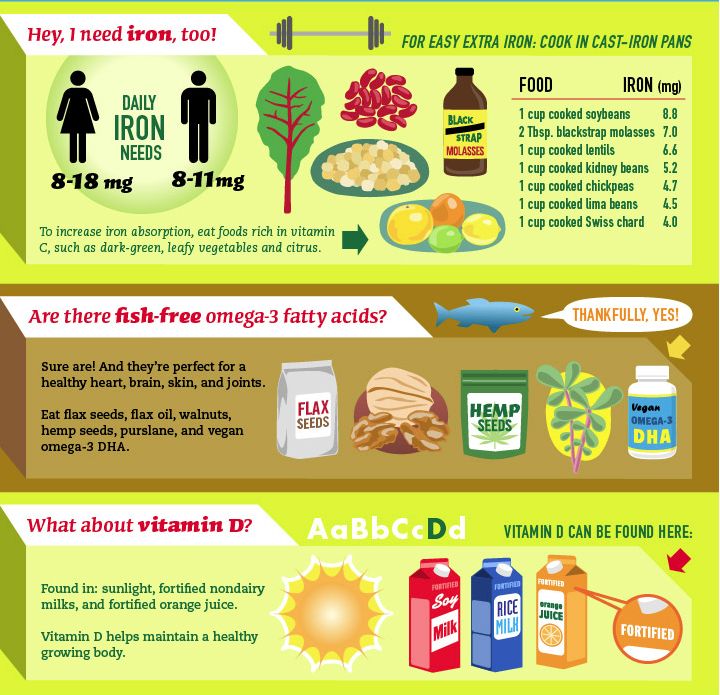 For example, for the production of cereals of the Bebi Premium line, milk is used, which is specially adapted for better absorption by the child's body. Milk for the products of this manufacturer is delivered from Danish dairy farms, recognized as the best in the world. The milk component is the highest in comparison with children's cereals of other brands and does not contain vegetable oils. The latter aspect is also very important in the matter of calcium absorption. Palmitic and stearic fatty acids, which are part of a number of vegetable oils, bind to calcium to form insoluble compounds, thereby preventing its absorption.
For example, for the production of cereals of the Bebi Premium line, milk is used, which is specially adapted for better absorption by the child's body. Milk for the products of this manufacturer is delivered from Danish dairy farms, recognized as the best in the world. The milk component is the highest in comparison with children's cereals of other brands and does not contain vegetable oils. The latter aspect is also very important in the matter of calcium absorption. Palmitic and stearic fatty acids, which are part of a number of vegetable oils, bind to calcium to form insoluble compounds, thereby preventing its absorption.
IMPORTANT! All products of the Bebi Premium line are enriched with a vitamin and mineral premix, which is specially selected qualitatively and quantitatively for better absorption of calcium. Thus, the necessary intake of the mineral is made up of the natural content in cereals and the milk component, as well as due to the additional enrichment of porridge with calcium and vitamin D.
This allows you to make a significant contribution to the daily need of the child for these essential substances.
Sour-milk products
At the age of over 6 months, the baby's diet can be supplemented with cottage cheese, and after 8 months with sour-milk drinks. These foods are also a source of easily digestible calcium. In the nutrition of children of the first year of life, first of all, specialized products based on cow and goat milk should be used - liquid (biolact, yogurt, kefir) and pasty (children's cottage cheese).
IMPORTANT! In these complementary foods, protein and milk sugar are partially broken down, improving digestibility and reducing the risk of allergies, kidney damage, and iron loss compared to whole cow's milk.
However, it must be remembered that the daily intake of these products should be limited in volume and not exceed 200 ml for drinks and 50 grams for baby cottage cheese. The use in large quantities can irritate the mucous membrane of the gastrointestinal tract, increase the load on the kidneys, cause colic, frequent and loose stools, and disrupt the absorption of iron.




